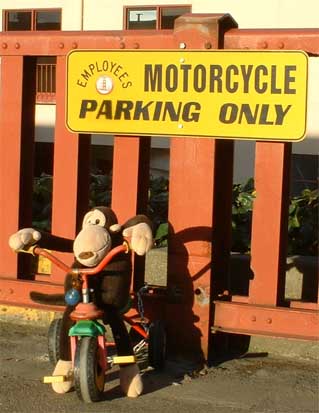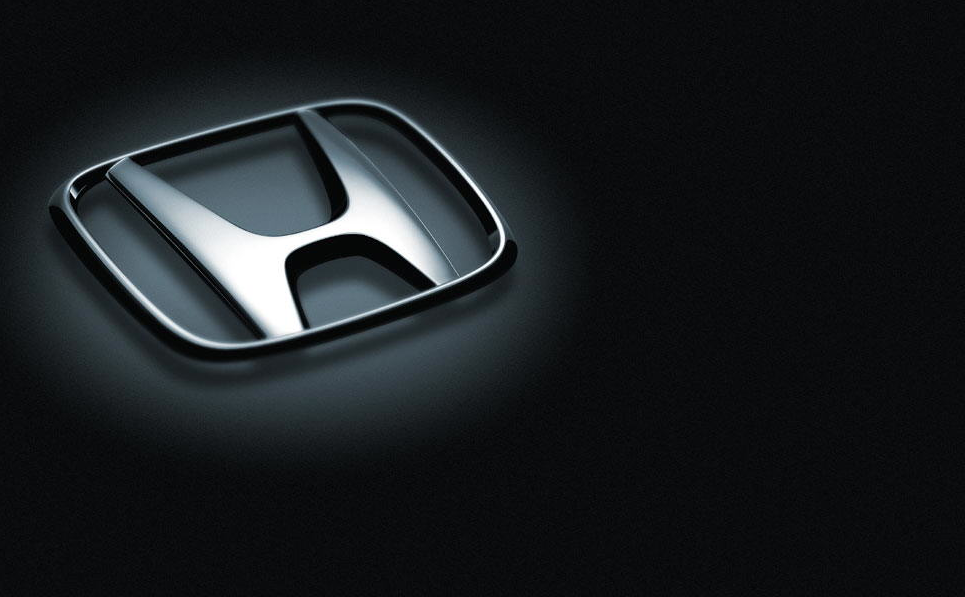whenever you straddle your legs between your loved one (i mean your motorcycle!), do you think about the worst case scenario of the ride that you are about to undertake? you know, the “unthinkable”; the “this thing won’t happen to me” sort of scenario?
It may sound morbid to you but I readily admit that I do. It gets my adrenaline pumping and more importantly, it reinforces the idea that I’m about to undertake a dangerous activity and I have to be careful. Having recently ridden with relatively new riders in Malaysia, I realised that some do not think much about the dangers of being on the roads. The over-riding mentality is to keep up with the pack (this is not necessary in Kruzer rides) and in the process ignoring other road users. While it’s easy to pin the blame on inexperience, advanced riders also run into the dangers of complacency. To summarise this paragraph, we just do not think enough when we’re out there.
 Charlie the Monkey doesn’t think very much
Charlie the Monkey doesn’t think very much
Take the picture below as an example. How many times have we seen motorcyclists speed ahead in such a situation to overtake the vehicle turning left? Would you speed ahead in these situations? Do you think the motorcyclist should consider if the vehicle turning out may not have seen him/ her? Common sense is such a cliche word in road safety, but many do not stop and contemplate the full meaning of the word.
 Picture taken from www.drivertheory.co.uk.
Picture taken from www.drivertheory.co.uk.
Knowing the dangers of riding a motorcycle is never enough and I thought I’d share an article about the “Hurt Study” which I’ve found recently. The study focuses on factors which cause motorcycle accidents. Although it was conducted in 1981, the summarized findings are pretty relevant in today’s context and I’ll going through 5 today (there are a total of 53).
1. Approximately three-fourths of these motorcycle accidents involved collision with another vehicle, which was most usually a passenger automobile.
There is really nothing conclusive about this finding except to reinforce the fact that there are a lot more cars out there than motorcycles. That these cars are fat, lazy and totally clumsy on the roads is another matter. 🙂
Seriously, you, the motorcyclist, will lose out in ANY collision with a 4 wheeled piece of metal slab. So please, keep a healthy respect for these monsters. Even if you feel aggrieved and start to tailgate one, or dashing through a traffic light without thinking about right turning vehicles from the other side of the road, think about the scraps and mental trauma you’ll get while stunned drivers probably just need to wipe off the piss in their pants.
2. Approximately one-fourth of these motorcycle accidents were single vehicle accidents involving the motorcycle colliding with the roadway or some fixed object in the environment.
aha! You may have thought that the remaining one-fourth of accidents are due to collision with other motorcycles but you couldn’t be further from the truth. To crash into a fixture is like walking into a bollard and bruising your private parts.
Although it sounds laughable altogether, think deeper about it. You have just rode 500km in the last 6 hours in the heat of the afternoon sun with sweat pouring down your face. Blood in your body goes towards the stomach, eagerly gathering nutrients from the heavy lunch you had half an hour ago. With a monotonous drone of the engine, you fade into a temporary sleep of a few micro seconds……
Concentration levels in long rides are VERY hard to keep up. Not only should one be prepared with ample rest the night before a ride, you must also be mentally prepared for it. Although it sounds dumb to crash into a fixed object, the hurt it can cause can be fatal.
3. Vehicle failure accounted for less than 3% of these motorcycle accidents, and most of those were single vehicle accidents where control was lost due to a puncture flat.
The numbers on vehicular failure is a fantastic testimony to the engineering feats of motorcycle manufacturers and approving bodies for motorcycles. Although not common, keeping a bike in good condition for a ride is a necessity. I cannot imagine if your bikes stalls halfway while you are making a right turn! You’ll be right smack in the middle of oncoming traffic!
It is even more rare to experience a puncture flat in these days with the advent of tubeless tires (remember that the survey was done in 1981). But they can still occur, especially if the tire was very worn out OR a case where a missing tire valve cap allows small rocks to get lodged into the air valve, rapidly reducing the air pressure.

No trouble for this bike!
4. In the single vehicle accidents, motorcycle rider error was present as the accident precipitating factor in about two-thirds of the cases, with the typical error being a slide-out and fall due to over-braking or running wide on a curve due to excess speed or under-cornering.
Strengthening my argument in Point 2, rider error IS a major problem. After all, we are only human. However, maturity in riding can drastically reduce such errors. A slide-out occurs when the bike’s wheels are locked and the rider skids. In my observations and discussions with other riders, inexperience may play a key role. A natural reaction to any danger is to suddenly pull the brakes really hard. Controlling a bike with the wheels being pulled back is akin to controlling a raging bull on a rodeo as your body is pulled forward while the bike is pulling backwards. Instead, firm grip and gradual (if afforded the time) would prepare one for the stop better.
Running wide on a curve is something every Kruzer will experience at least once. The twisties of Simpang Pulai, Fraser Hill or the Karak Highway are all fraught with hidden bends and sudden changes in turning angles. Approaching the twisties in a responsible way, ie braking to a reasonable speed, and keeping your concentration up and aiming to stay in your lane will help to ensure that this will not happen to you! There are times after running wide, where I thanked the heavens for not allowing a bus be in the opposite direction.

spot the error for this guy!!
5. Roadway defects (pavement ridges, potholes, etc.) were the accident cause in 2% of the accidents; animal involvement was 1% of the accidents.
Contrary to popular belief, Malaysian roads are NOT always ridden with potholes. In fact, the N-S highway has been very well kept with constant re-paving and extension works to ensure all road users a pleasant ride. That said, there are still some areas which need a massive improvement and these are the areas which we as motorcyclists must be aware of. A personal experience I had in a Malaysian trunk road was when I suddenly realised I wasn’t on tarmac anymore and was riding on a gravel patch beside the road! It was pitch black at night and I haven’t realised that the road tapered into a single lane.
Animal involvement in accidents are rare indeed and yet in our early riding days, one of our travelling group actually hit a cow! Luckily, the rider and pillion were fine with sprained ankles and bruises but the bike and cow was thrashed. The cow had to be killed. In short, be aware when you are in animal territory. It is the same on the N-S highway, although the animals tend to be the smaller types such as cats, dogs and monitor lizards. They can still cause you to lose control so think about it!

obviously, Mr Officer wasn’t paying attention
I’ll continue with the rest of the findings in days to come but I hope that as you ride, you’ll think about the things that can go wrong and act to prevent them from happening. Knowing what can go wrong prevents you from being in that situation in the first place!
I will be glad to hear constructive stories, differing points of views and comments. Afterall, we are all here to learn and improve. 🙂
The “Hurt Study” summarised findings can be found here!
http://www.webbikeworld.com/Motorcycle-Safety/Hurt-study-summary.htm
The views expressed in this article are the author’s own and are not necessarily those of Kruzer.




Nice one. No rockstars on the road guys. Humble Pie a bit. Circa 1968. http://en.wikipedia.org/wiki/Humble_Pie_(band) <- out of context but the words stay the same.
I’m back and its a very useful note. Like you said, human tend to err and thus that minuscle % of error will one day cause the inevitable. Knowing that is the truth, one can only be more prepared to prevent the inevitable as much as possible.